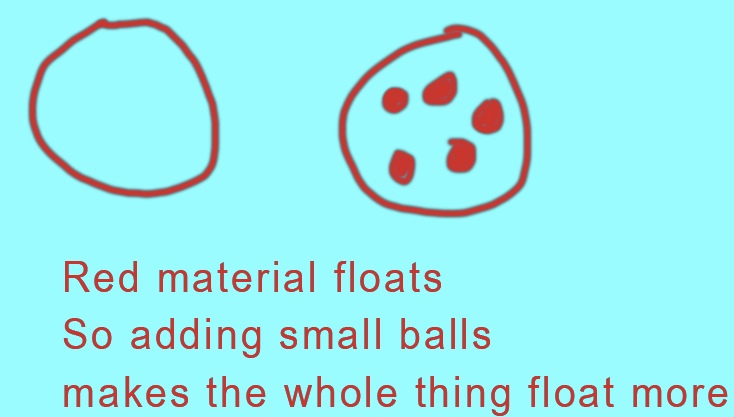Stevan Gvozdenovic
Member
I know there must be a flaw somewhere but I can't find it so let's do it together.
It's based on changing density of object in water(or some other liquid for that matter).

here you can see a bigger ball which, when empty, has less density than water and thus floats, but in this case it's full of smaller balls (all of those are also less dense than water) which make the big ball denser than water thus it sinks, pulling the string connected to coil outside of the water tank which is then rotated and energy is produced
so when the ball reaches the bottom, a sensor activates its opening (via internal hatch or somehow else) and this is what happens

all objects in the rectangle are now less dense than water and they all go up to the surface
then we have the next situation

when they all come to the surface, the big empty ball is lifted and only smaller balls are staying on the surface, they are collected with some type of shovel (marked with line S) lifted and put into the big ball, the big ball is then disconnected from the "roof" and we are back at the picture 1, rinse and repeat
I can't prove if energy created would be enough for lifting the big ball to the roof and putting small balls into the big ball but I can't prove it wouldn't be either.
It's based on changing density of object in water(or some other liquid for that matter).
here you can see a bigger ball which, when empty, has less density than water and thus floats, but in this case it's full of smaller balls (all of those are also less dense than water) which make the big ball denser than water thus it sinks, pulling the string connected to coil outside of the water tank which is then rotated and energy is produced
so when the ball reaches the bottom, a sensor activates its opening (via internal hatch or somehow else) and this is what happens
all objects in the rectangle are now less dense than water and they all go up to the surface
then we have the next situation
when they all come to the surface, the big empty ball is lifted and only smaller balls are staying on the surface, they are collected with some type of shovel (marked with line S) lifted and put into the big ball, the big ball is then disconnected from the "roof" and we are back at the picture 1, rinse and repeat
I can't prove if energy created would be enough for lifting the big ball to the roof and putting small balls into the big ball but I can't prove it wouldn't be either.


